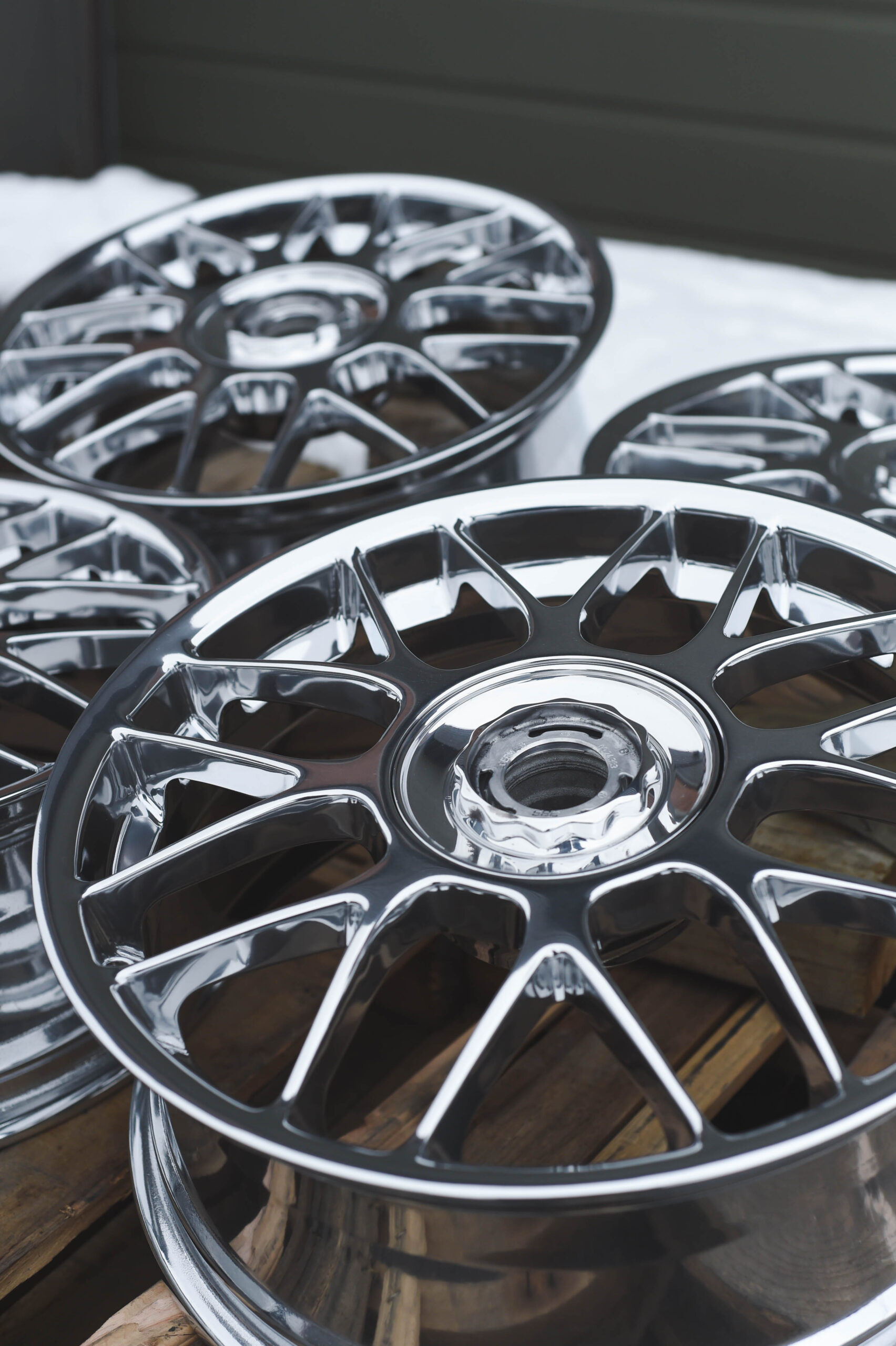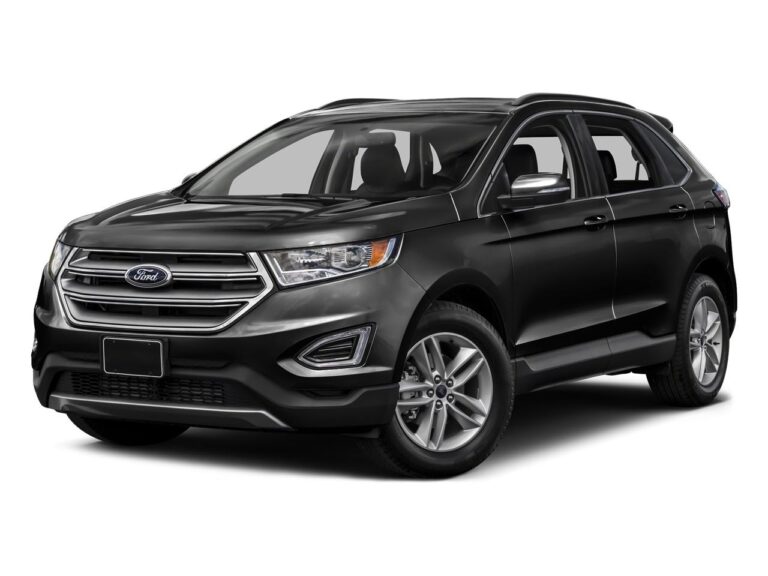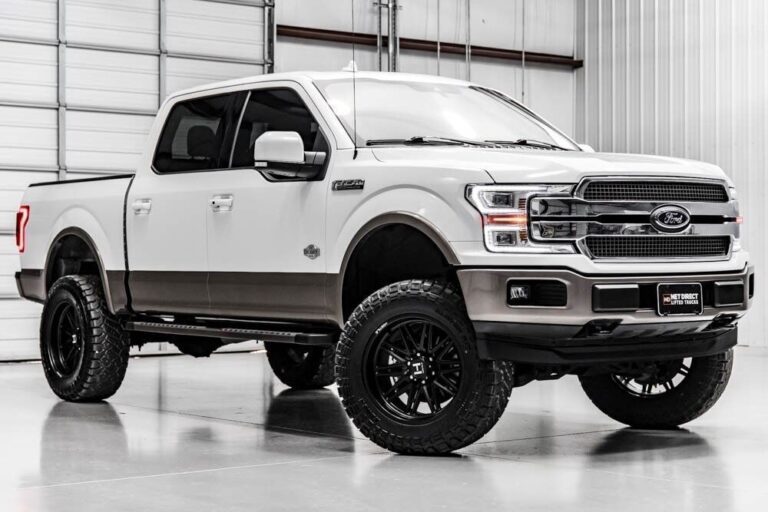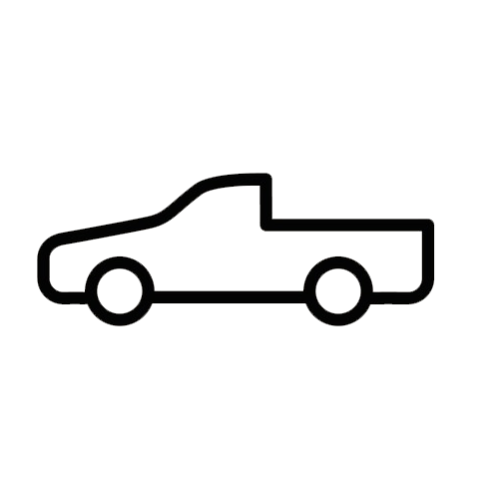Common Sizes For Truck Caps: A Comprehensive Guide to Perfect Fit and Functionality
Common Sizes For Truck Caps: A Comprehensive Guide to Perfect Fit and Functionality cars.truckstrend.com
For truck owners, a truck cap – often referred to as a camper shell, truck topper, or truck canopy – is more than just an accessory; it’s a transformative addition that enhances utility, security, and weather protection for their cargo. Whether you’re a weekend adventurer, a tradesperson, or simply looking to expand your truck’s enclosed storage, a truck cap turns your open bed into a versatile, secure compartment. However, the effectiveness and aesthetic appeal of a truck cap hinge entirely on one critical factor: its size. Choosing the right size ensures a watertight seal, a secure fit, proper aesthetics, and optimal functionality. An ill-fitting cap can lead to leaks, rattles, compromised security, and a visually unappealing mismatch. This guide will delve deep into the common sizes for truck caps, equipping you with the knowledge to make an informed decision for your vehicle.
Deciphering Truck Cap Dimensions: Beyond Just Length
Common Sizes For Truck Caps: A Comprehensive Guide to Perfect Fit and Functionality
When we talk about truck cap sizes, we’re not just referring to a single number. A truck cap’s fit is determined by three crucial dimensions: length, width, and height. Understanding how these measurements interact with your truck bed is fundamental.
- Length: This is arguably the most critical measurement, as the cap’s length must precisely match the length of your truck bed. Truck bed lengths are typically measured from the bulkhead (the wall closest to the cab) to the inside of the tailgate, with the tailgate closed. Common bed lengths are often expressed in feet (e.g., 5.5 ft, 6.5 ft, 8 ft) but can vary slightly by manufacturer. A cap that is too long will overhang the tailgate, preventing it from closing, while one that is too short will leave a gap.
- Width: The cap’s width must perfectly span the width of your truck bed rails. While less varied than length, subtle differences in bed rail width and profile exist between different truck makes, models, and even years. A cap that is too wide won’t sit flush, creating gaps, and one that is too narrow will fall into the bed or sit insecurely. Most caps are designed to sit slightly over the bed rails for a secure, watertight seal.
- Height: This dimension refers to the cap’s vertical profile. It doesn’t relate to the truck bed’s dimensions directly but rather to the truck’s cab height and your specific needs.
- Cab-High: These caps are designed to be flush with the top of your truck’s cab. They offer the most aerodynamic profile, often maintaining the truck’s factory lines, and are popular for general utility, aesthetics, and minimal impact on fuel economy.
- Mid-Rise: Slightly taller than the cab-high, mid-rise caps offer a bit more interior cargo volume, making them ideal for carrying slightly taller items without going to a full high-rise. They still maintain a relatively sleek look.
- High-Rise/Commercial: These caps are significantly taller than the truck’s cab, maximizing vertical cargo space. They are often favored by contractors, campers, or anyone needing to transport bulky equipment. While offering immense utility, they are less aerodynamic and can impact fuel efficiency and rear visibility.

Why Size is Paramount: The Consequences of Mis-sizing
Choosing the wrong size truck cap can lead to a host of problems, turning a beneficial investment into a source of frustration:

- Poor Fit and Functionality: Gaps between the cap and the bed rails will lead to water leaks, dust intrusion, and a compromised seal, defeating the purpose of weather protection. An ill-fitting cap can also rattle, shift during travel, or even come loose, posing a safety hazard.
- Compromised Security: If the cap doesn’t fit snugly, it’s easier to pry open, undermining its ability to secure your valuable cargo.
- Aesthetic Discrepancy: A cap that doesn’t align properly with your truck’s body lines or cab height will look awkward and diminish the overall appearance of your vehicle.
- Reduced Resale Value: An improperly fitted cap is difficult to sell, and even if it’s included with the truck, it can detract from the truck’s perceived value.
- Installation Challenges: While some minor adjustments can be made, a significantly wrong-sized cap will be impossible to install correctly, leading to additional costs or the need to return the cap.

Common Truck Bed Sizes and Their Corresponding Cap Fits
Truck manufacturers have somewhat standardized bed lengths, making it easier to categorize common cap sizes. However, remember that widths and rail profiles can vary.
- Mid-Size Trucks (e.g., Toyota Tacoma, Chevrolet Colorado, Ford Ranger, Nissan Frontier):
- Short Bed (approx. 5 feet / 60 inches): Common on crew cab configurations, these beds typically pair with caps around 60-61 inches in length.
- Long Bed (approx. 6 feet / 72 inches): Often found on extended cab or some crew cab models, requiring caps around 72-73 inches in length.
- Full-Size Trucks (e.g., Ford F-150, Chevrolet Silverado 1500, Ram 1500, Toyota Tundra):
- Short Bed (approx. 5.5 feet / 66 inches): Very common on crew cab full-size trucks, requiring caps around 66-67 inches in length.
- Standard/Extended Cab Bed (approx. 6.5 feet / 78 inches): A popular choice for extended cab and some crew cab configurations, needing caps around 78-79 inches long.
- Long Bed (approx. 8 feet / 96 inches): Primarily found on regular cab or specific extended cab models, requiring caps around 96-97 inches in length.
- Heavy-Duty Trucks (e.g., Ford F-250/350, Chevrolet Silverado/GMC Sierra 2500/3500, Ram 2500/3500):
- These trucks often utilize 6.5 ft and 8 ft bed lengths similar to full-size trucks. However, their bed rail profiles and widths can be slightly different, necessitating caps specifically designed for heavy-duty models. Always double-check fitment guides.
The Essential Guide to Measuring Your Truck Bed for a Cap
Even with common sizes, precise measurements are paramount. Don’t rely solely on your truck’s published bed length, as slight variations can occur, especially with older models or aftermarket bed liners.
Tools Needed:
- A reliable tape measure (preferably a long one, 25-30 feet)
- Pen and paper
- A helper (optional, but makes measuring easier)
Step-by-Step Measurement Process:
- Measure Interior Bed Length:
- Close your tailgate.
- Measure from the inside edge of the front bulkhead (the wall of the bed closest to the cab) to the inside edge of the tailgate.
- Measure along the center of the bed floor to avoid any curvature.
- This measurement should be very precise, down to the nearest 1/8th of an inch.
- Measure Exterior Bed Width:
- Measure the width across the widest point of your truck’s bed rails, typically near the tailgate.
- Measure from the outside edge of one bed rail to the outside edge of the other.
- This measurement ensures the cap will sit properly over the rails.
- Measure Cab Height (for height preference):
- If you’re considering a cab-high cap, measure from the top of your truck’s bed rail straight up to the highest point of your cab (usually the roofline, but sometimes accounting for a third brake light). This helps you determine if a cap will truly be "cab-high."
- Note Down Your Truck’s Specifics:
- Make (e.g., Ford)
- Model (e.g., F-150)
- Year (e.g., 2020)
- Cab Configuration (e.g., Crew Cab, Extended Cab, Regular Cab)
- Any aftermarket bed liners, rail caps, or modifications that might affect fit.
Practical Advice: Always double-check your measurements. It’s better to measure three times than to order the wrong cap once.
Beyond Dimensions: Factors Influencing Your Cap Size Choice
While physical dimensions dictate fit, your intended use and personal preferences should guide your choice of cap height and features.
- Primary Use:
- Recreational (Camping, Light Gear): A cab-high or mid-rise fiberglass cap often strikes the perfect balance of aesthetics and protection.
- Commercial/Work (Tools, Equipment): High-rise or commercial-grade aluminum caps offer maximum cargo volume and durability, often with side access doors and interior shelving options.
- General Weather Protection/Security: Any well-fitted cap will achieve this, but a cab-high fiberglass cap is a popular choice for its sleek appearance.
- Aesthetics: Do you prefer your cap to blend seamlessly with your truck’s lines (cab-high) or make a statement with added height?
- Aerodynamics & Fuel Economy: Cab-high caps generally offer the best aerodynamics and minimal impact on fuel efficiency. High-rise caps can create more drag.
- Access Needs: Consider how you’ll load and unload. Some caps offer side windows that open, or even full side access doors, which can be invaluable for certain uses.
Navigating the Market: Tips for Choosing the Right Size
- New vs. Used Caps:
- New Caps: When purchasing new, provide your truck’s make, model, year, and bed length to the dealer. They have detailed fitment guides and can order a cap custom-built for your specific vehicle, ensuring a perfect fit and matching paint.
- Used Caps: Buying used can save money but requires meticulous verification. Bring your measurements, and if possible, physically test-fit the cap on your truck before purchasing. Minor differences in bed rail caps or tailgate designs between seemingly identical truck models can cause fit issues.
- Consult Manufacturer Specifications: Reputable cap manufacturers (e.g., ARE, Leer, Snugtop, Century) provide detailed fitment guides on their websites or through their dealers. Always cross-reference your measurements with their recommended cap for your truck.
- Dealer Consultation: Truck cap dealers are experts. They have databases of truck dimensions and cap specifications. Don’t hesitate to consult them with your measurements and truck details.
- Professional Installation: Even with the right size, proper installation is crucial for a watertight seal and security. Many dealers offer professional installation services, which is highly recommended.
Challenges and Solutions in Truck Cap Sizing
- Non-Standard or Older Truck Beds: Some vintage trucks or highly customized beds may not conform to standard dimensions.
- Solution: Custom fabrication is an option, though expensive. Alternatively, meticulously search the used market for a cap from a truck with very similar dimensions, or consider a universal-fit commercial shell if aesthetics aren’t a top priority.
- Minor Model Year Variations: Truck manufacturers sometimes make subtle changes to bed rail profiles or tailgate designs within the same model run.
- Solution: Always specify the exact year of your truck. Provide photos of your bed rails to the seller if buying used or online.
- Aftermarket Bed Liners/Rail Caps: These can alter the effective dimensions or profile of your bed rails, affecting the cap’s seal.
- Solution: Remove drop-in bed liners or measure precisely with them in place. Many caps are designed to sit over spray-in liners without issue. For rail caps, ensure they don’t interfere with the cap’s clamping mechanism.
- Finding the "Perfect" Used Cap: Locating a used cap that matches your truck’s exact dimensions, color, and features can be a lengthy process.
- Solution: Be patient, expand your search radius, and be open to repainting a cap if the fit is perfect but the color isn’t. Prioritize fit over aesthetics when buying used.
Price Table: Estimated Costs for Common Truck Cap Sizes
Disclaimer: The prices below are estimated ranges and can vary significantly based on brand, material (fiberglass, aluminum), features (windows, lighting, roof racks, carpeted interior), finish, and installation costs. These are general guidelines.
| Truck Bed Size | Cap Type / Material | Estimated Price Range (USD) |
|---|---|---|
| Mid-Size Trucks | ||
| 5 ft (Short Bed) | Cab-High Fiberglass (Basic) | $1,500 – $2,500 |
| 5 ft (Short Bed) | High-Rise Aluminum (Basic) | $1,200 – $2,000 |
| 6 ft (Long Bed) | Cab-High Fiberglass (Basic) | $1,700 – $2,800 |
| 6 ft (Long Bed) | High-Rise Aluminum (Basic) | $1,400 – $2,300 |
| Full-Size Trucks | ||
| 5.5 ft (Short Bed) | Cab-High Fiberglass (Basic) | $1,800 – $3,000 |
| 5.5 ft (Short Bed) | Mid-Rise Fiberglass (Basic) | $2,000 – $3,500 |
| 5.5 ft (Short Bed) | High-Rise Aluminum (Basic) | $1,500 – $2,500 |
| 6.5 ft (Standard Bed) | Cab-High Fiberglass (Basic) | $2,000 – $3,200 |
| 6.5 ft (Standard Bed) | Mid-Rise Fiberglass (Basic) | $2,200 – $3,700 |
| 6.5 ft (Standard Bed) | High-Rise Aluminum (Basic) | $1,700 – $2,700 |
| 8 ft (Long Bed) | Cab-High Fiberglass (Basic) | $2,200 – $3,500 |
| 8 ft (Long Bed) | High-Rise Aluminum (Basic) | $1,900 – $3,000 |
| Heavy-Duty Trucks | ||
| 6.5 ft (HD Bed) | Cab-High Fiberglass (Basic) | $2,200 – $3,800 |
| 8 ft (HD Bed) | High-Rise Aluminum (Basic) | $2,000 – $3,200 |
| Premium Features | (Roof racks, interior lights, carpet, custom windows, remote lock) | Add $300 – $1,500+ |
| Installation Cost | (Professional) | $100 – $300 |
Frequently Asked Questions (FAQ)
Q: Can I put a cap designed for a Ford F-150 on a Chevy Silverado?
A: Generally, no. While both are full-size trucks, their bed dimensions (especially width and rail profile) are different. A cap designed for one manufacturer’s truck will not properly fit another’s.
Q: Do all 6.5 ft truck beds use the same size cap?
A: Not necessarily. While the length might be the same, the width and specific bed rail design (including the presence of factory rail caps) can vary significantly between different makes and models, and even between different years of the same model. Always verify with your truck’s exact specifications.
Q: How do I know if a used cap will fit my truck?
A: The best way is to measure your truck bed precisely (length, width, and cab height). Then, obtain the exact dimensions of the used cap. Ideally, perform a physical test fit before purchasing. Look for the cap’s original manufacturer and the truck model it was designed for, as this can greatly narrow down compatibility.
Q: What if my truck bed has a bed liner?
A: If you have a spray-in bed liner, it typically doesn’t affect cap fitment as it conforms to the bed’s contours. If you have a drop-in plastic bed liner, it can sometimes interfere with the cap’s clamping system or slightly alter the effective width. It’s often recommended to remove drop-in liners for best cap fit and seal, or ensure the cap is designed to accommodate them.
Q: Is it worth getting a custom-sized cap?
A: For most modern, standard trucks, a custom-sized cap isn’t necessary as manufacturers produce caps specifically for common models. However, if you have a vintage truck, a highly modified bed, or a unique vehicle, a custom-fabricated cap might be your only option to achieve a perfect fit, albeit at a higher cost.
Conclusion
Understanding common sizes for truck caps is the cornerstone of making a smart purchase. It’s not just about aesthetics; it’s about functionality, security, and maximizing the investment in your truck. By accurately measuring your truck bed, knowing the various cap dimensions, and considering your specific needs, you can confidently navigate the market. Whether you opt for a sleek cab-high, a versatile mid-rise, or a utilitarian high-rise, ensuring the perfect fit will transform your truck into an even more capable and secure companion for all your adventures and tasks. Take the time to measure twice and buy once, and your truck cap will serve you reliably for years to come.





